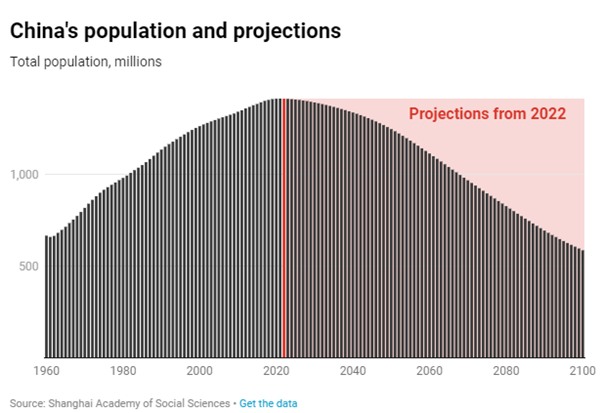Fewer.
The Future Does Not Fit in the Containers of the Past. Edition 134.
An underlying assumption many individuals, managers and businesses incorporate into our decisions and choices is the concept of maximizing.
While much of growth and well-being may be driven by more, a case could be made that less is what many should aim for if we are to solve problems, be happier and grow.
We are moving into an age of “fewer”.
Fewer things.
Fewer “managers”.
Fewer big companies.
Fewer people.
Which might give rise to greater rather the fewer opportunities.
1.Fewer things.
In a piece on Sustainable Commerce Rex Woodbury points out the following:
a)Brands overproduce more than $500B of goods annually. In many categories less than half the inventory is sold.
Source: Hannah Murdoch & Rebecca Kaden of USV and Shopify data
b) Much of this unsold product ends up in landfills like the Great Pacific Garbage Patch, which covers 1.6 million square kilometers in the Pacific Ocean between Hawaii and California. The garbage patch is growing exponentially, swelling 10x each decade since 1945.
c) Most of the fast retail clothing is worn fewer than 6 times and is tossed filling landfills
What if one of the most powerful ways to address environmental challenges is to buy, consume and sell less?
2.Fewer Managers.
Listen carefully to many employees as to why they prefer working from home or away from the office and in addition to flexibility, freedom, and work-life balance it is that they are more productive away from micro-managing, controlling, monitoring, continuously checking in management.
The past 3 years of working from home and or hybrid work has revealed that many managers are in crisis because they were not really managers but monitors, not leaders but bosses, not problem solvers but project assigners, and the talent who they oversee have begun to wonder what actual value their managers create besides “managing”.
Managers are an important role but as wonderful survey of research by NPR “Why your bad boss will probably lose the remote-work wars” reveals much of the blather about the importance of returning to the office is because management has failed to re-invent itself and recognize that there is much less need for their hovering. That in person interaction is key for training, creativity and relationship building but a forced march to x days in an office may not be the way to achieve this.
Fewer great in person interactions versus doing work one can do at home from the office.
We have entered an age of “De-bossification”
In many industries particularly “White-collar” ones the era of “bosses” is in decline.
There is a rise in the need for leaders, guides, coaches, mentors, role-models, creators, and builders.
Less of a clamoring for bosses, managers, controllers, monitors, evaluators, and paper pushers.
This shift has been driven by changing demographics, the spread of technology, the rise of unbundled and distributed work, new behavior expectations, and a re-definition of what “work” is including the rise of fractionalized and free-agent talent who work for themselves or at multiple jobs and are expected to comprise most of the work force in the US by the end of the decade.
More and more companies like Meta are interrogating why they have so many levels of managers and do these managers create enough value and to offset their cost and the extra slowness multiple layers can create.
2023 will be the year of “The Great Flattening” as multiple layers of hierarchy are interrogated.
People think the threat of a recession will give the balance of power to managers over employees when the exact opposite is likely to be true where employees have many more options because of a new world of marketplaces and technologies and three years of recognizing that individuals succeeded without too much management will have Board look at the layers of bosses and cut real estate costs.
3.Fewer Big Companies.
A recent Wall Street Journal article, relying on labor data and an analysis from Jeffries, an investment banking and capital markets firm, determined that small companies were responsible for all of the net job growth since the start of the pandemic and accounted for four out of five job openings. According to the government’s Job Openings and Labor Turnover Survey, companies with fewer than 250 employees hired 3.67 million more people than have been laid off or who quit since February 2020. Larger companies, on the other hand, have cut a net 800,000 jobs during this time.
Increasingly scale is a disadvantage because modern technology, cloud computing, and marketplaces from Upwork to Shopify allow small firms and individuals to tap into scaled resources just in time while being agile and keeping costs flexible.
Technology is the slingshot that allows David to take on Goliath.
In addition to enabling technology there is a new mindset favoring small:
Over a third of Gen-Z have side-hustles and side-gigs as being a maker, owner, creator, influencer is far more compelling than being just a managed employee.
4. Fewer People
It takes 2.1 children per woman to keep the population flat.
That number in most advanced countries is less than 1.7 and declining.
The latest UN projections suggest that the world’s population could grow from 8 billion people to a peak of 10.4 billion before the end of this century. But if we exclude population growth in Africa the population of the world has peaked and, in a few countries, we are starting the great shrinkage.
The Shanghai Academy of Social Sciences team predicts an annual average decline of 1.1% beginning in 2021 pushing China’s population down to 587 million in 2100, less than half of what it is today.
Every business should interrogate their strategy to ask two questions a) how will our plans be impacted in our key markets with declining populations and b) what is our plan for the continent of Africa which will contain more 40 percent of the global population in 2100?
So, as we navigate the future, we may want to start planning on how to grow in a world of fewer, smaller and less than a world of unlimited, bigger and more.
Managing is so Yesterday!: On the latest episode of What Next? Jenna Young, Head of Client Creative at Korn Ferry on what it takes for people to thrive at work. The value of leaders being available to their teams, what it means to translate a leader’s vision into a reality and why the new CEO of Starbucks is training first as a barista.











Smaller containers! Yes there is a mindset change which much of Managerial America is slowly coming to grips with
Thank you for your insights. Reducing waste & doing more with less are very important goals globally. Consumption-based economies may need to be reformed to thrive with less production of goods.